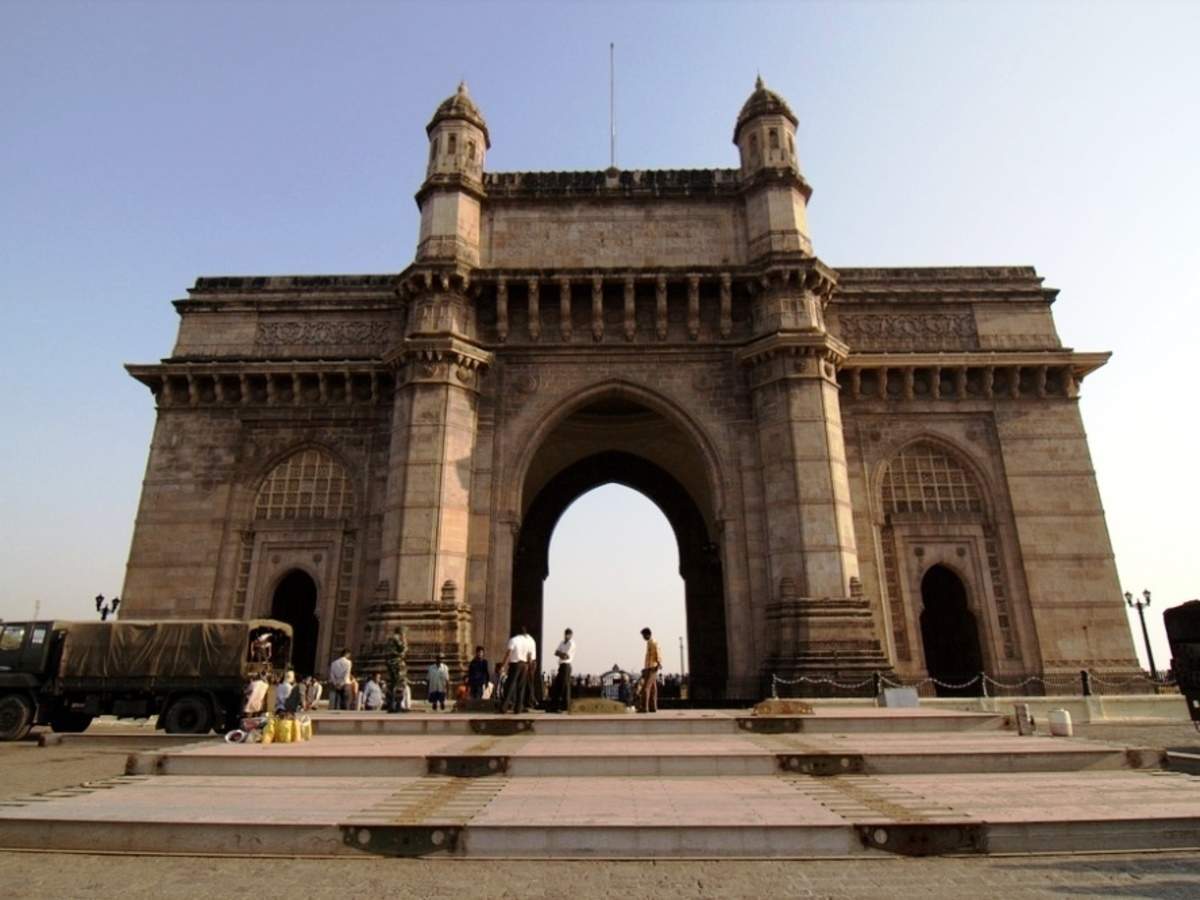The Gateway Of India India

The Gateway of India, located in Mumbai, India, is a stunning monument that offers a glimpse into the rich history and culture of the region. This iconic structure has been a symbol of India's history and is considered one of the most famous landmarks in the country.
Built in 1924, the Gateway of India is an architectural masterpiece that was designed to commemorate the visit of King George V and Queen Mary to India. It was also built to commemorate the sacrifices made by soldiers in the First World War. The monument is a blend of Hindu and Muslim styles of architecture, which is a reflection of the cultural diversity of India.
The monument stands tall on the waterfront of Mumbai and offers a breathtaking view of the Arabian Sea. It is known for its iconic arch, which stands 26 meters high, and is made of yellow basalt and reinforced concrete. The monument is adorned with intricate carvings and sculptures that depict the history and culture of India.
Over the years, the Gateway of India has become a popular tourist attraction and is one of the major landmarks of Mumbai. Millions of tourists from all over the world visit the monument every year to admire its stunning architecture and learn about the history of India. The monument is also a popular spot for photography and has been featured in many Bollywood movies.
Apart from its historical and cultural significance, the Gateway of India also serves as a gateway to the Elephanta Caves, which are a UNESCO World Heritage Site. Visitors can take a ferry from the Gateway of India to reach the caves and explore the ancient temples and caves.
Visitors to the Gateway of India can also take a stroll along the Marine Drive, which is a 3.6 km long promenade that offers a stunning view of the Arabian Sea. The promenade is also known as the "Queen's Necklace" due to the spectacular view of the city's lights at night.
For those interested in history, a visit to the Chhatrapati Shivaji Maharaj Vastu Sangrahalaya is a must. The museum is located near the Gateway of India and houses a collection of over 50,000 artifacts that depict the history and culture of India.
The Crawford Market is another popular attraction near the Gateway of India. The market is known for its vibrant atmosphere and is a great place to shop for souvenirs and local handicrafts.
When visiting the Gateway of India, it is important to keep in mind the history and significance of the monument. Visitors should be respectful of the monument and avoid littering or causing any damage to the structure. It is also important to be mindful of the local customs and traditions and dress appropriately while visiting the monument.
History
The Gateway of India was designed by the British architect, George Wittet, and was built between 1911 and 1924. The construction of the monument was completed to commemorate the visit of King George V and Queen Mary to India in 1911. It was also built to mark the visit of the Governor of Bombay, Sir George Sydenham Clarke, to the city in 1912.
The foundation stone of the Gateway of India was laid down in 1911 by Sir George Sydenham Clarke, who was the Governor of Bombay at that time. The construction of the monument was carried out by the Indian construction company, Sir M. Visvesvaraya and Company. The monument was opened to the public on December 4, 1924.
During the construction of the Gateway of India, over 31,000 tons of basalt was used, which was sourced from the nearby quarries. The monument was built at a cost of INR 21 lakhs, which was a significant amount of money at that time.
Travel Tips
1. The Gateway of India is open to visitors every day from 7am to 5:30 pm.
2. Visitors can take a ferry from the Gateway of India to reach the Elephanta Caves, which are located on an island.
3. It is advisable to dress conservatively while visiting the monument as a mark of respect to the local customs and traditions.
4. Visitors should be mindful of the traffic while crossing the road as the area around the Gateway of India can get crowded.
5. It is advisable to carry water and snacks while visiting the monument as there are limited options for refreshments nearby.
6. Photography is allowed inside the monument, but visitors should be mindful of the other tourists and avoid causing any inconvenience.
7. The best time to visit the Gateway of India is early in the morning or late in the evening when the crowds are thin and the weather is pleasant.
8. Visitors should be respectful of the local customs and traditions and avoid littering or causing any damage to the monument.
In conclusion, a visit to the Gateway of India is a must for anyone visiting Mumbai. The monument is a stunning example of India's rich history and culture and offers a glimpse into the country's heritage. Visitors can not only admire the stunning architecture of the monument but also explore the nearby attractions to get a better understanding of Mumbai's rich culture and traditions. With the right planning and preparation, a visit to the Gateway of India can be an unforgettable experience for anyone visiting Mumbai.

Post a Comment for "The Gateway Of India India"